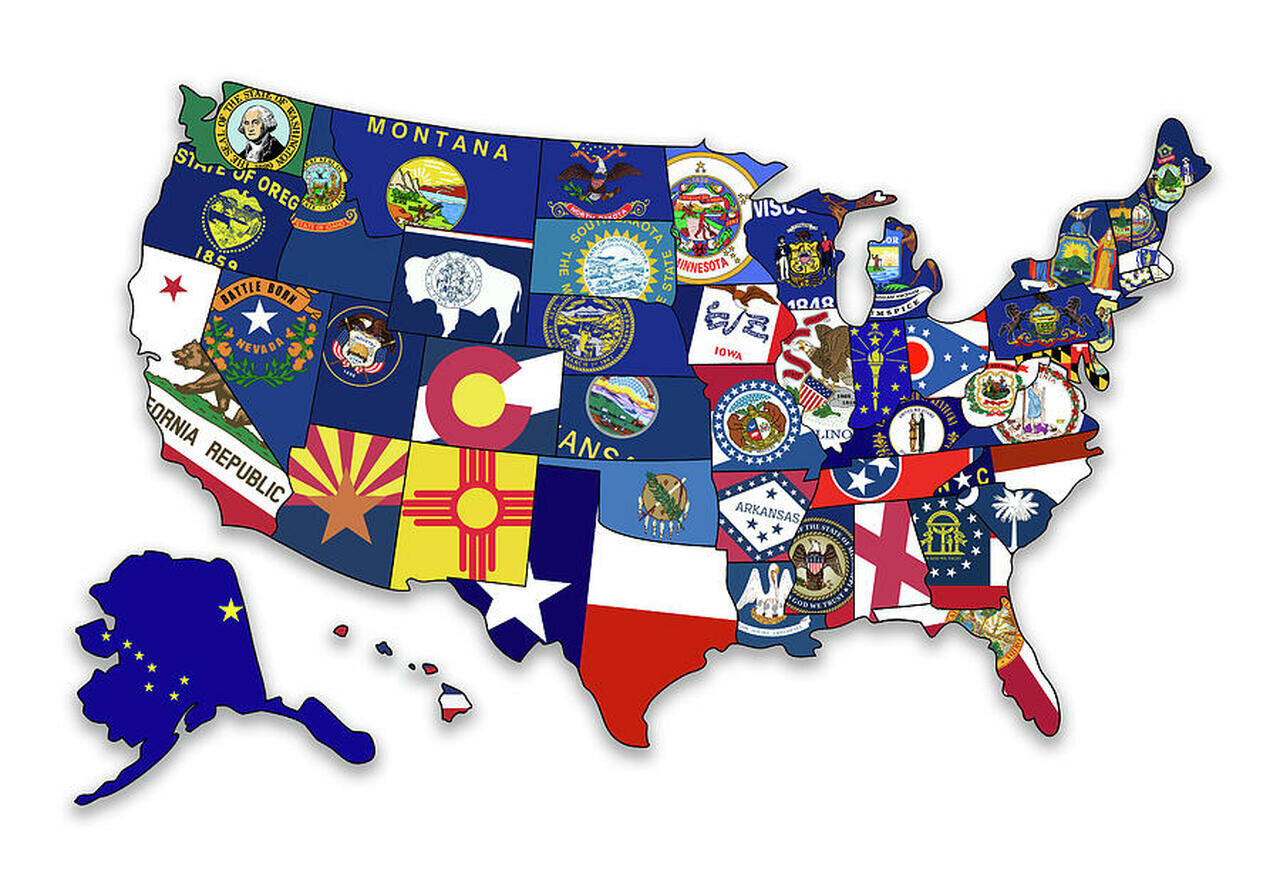Editorial: Dull and Dated - Why American State Flags Deserve a Change
Photo courtesy of Veterans Flag Depot.
This editorial was recently selected as a Round 4 Finalist in the 2021 New York Times Student Editorial Contest.
To Americans, flags carry grand significance. Whether billowing in front of your local post office or the neighbors’ front lawn, chances are that you are never far from the stars and stripes. How you choose to regard the American flag can reflect your personal political leanings. As a country with cemented sentiment for flag-associated symbolism, why is it that the majority of state flags are designed so poorly?
When well-executed, state flags serve their intended purpose of culturally uniting a state’s diverse population. Texas masterfully exemplifies flag principle, evident based on its presence upon car bumpers and t-shirts all throughout the Lone Star State, a nickname which itself is derived from the star present on the Texan flag. The North American Vexillological Association attributed the success of the Texas flag to the primary principle of vexillology, the study of flags, of having the “simplest possible design consistent with bearing a unique, easily distinguished identity.” (Kaye)
Unfortunately, most state flags beg to differ. The flag of New York centers the detailed state seal atop a solid blue background, creating a busy and bland composition. The Empire State follows a formula loathed by vexillologists – the “seal-on-bedsheet” design, initially implemented by many states to represent Civil War army regiments, over time adopted by more than half of the country. As they are solely distinguished by minuscule, intricate seal features or a difference in bedsheet hue, these uninspired seal-on-bedsheet banners fail to notably embody the cultural vibrancy of each individual state.
However, state governments have begun to take action toward flag improvement. In December 2020, the state senate of Utah voted to replace their seal-and-bedsheet relic with a new “sufficiently simple” (KUTV) design, criteria prioritizing “preference to a single primary symbol” and avoidance of “writing or the use of a seal.”
In addition to aesthetic enhancement, growing demands for social equity have prompted certain states to retire flags which perpetuate division through problematic design motifs. Last year, Mississippi took down its former flag dominated by the confederate battle emblem, in favor of embracing a new design featuring the magnolia as the centerpiece. Massachusetts lawmakers have established a commission to replace the current Massachusetts flag, which depicts an Indigenous man standing in submission beneath a sword-bearing arm representing European colonization.
While these changes may seem minor, the transformation of state flags represents pivoting away from the glorification of colonialism and the confederacy, and providing a recognizable symbol which a broad population can take pride in. As nationwide political and social tensions tighten, I believe that states should endeavor to elevate their emblems from beyond the depths of intolerance and mediocrity, to symbols of unity and progress.
Works Cited:
Green, Michael. “The Good, the ‘Meh’ and the Ugly.” Medium, Branding the Nations, 27 Jan. 2020, medium.com/branding-the-nations/the-good-the-meh-and-the-ugly-3efb49195591.
Kaye, Edward B. “Good Flag, Bad Flag, and the Great NAVA Flag Survey of 2001.” Raven: A Journal of Vexillology, vol. 8, 2001, pp. 11–38., doi:10.5840/raven200182.
Nieto del Rio, Giulia McDonnell, and Rick Rojas. “Mississippi Wants Magnolia to Be Centerpiece of New State Flag.” The New York Times, The New York Times, 3 Sept. 2020, www.nytimes.com/2020/09/02/us/mississippi-magnolia-state-flag.html.
Onwuamaegbu, Natachi. “With a New Flag, Massachusetts Would Fly a Symbol of 'Slaughter and Attempted Genocide' No More.” The Boston Globe, The Boston Globe, 14 Jan. 2021, www.bostonglobe.com/2021/01/14/arts/with-new-flag-massachusetts-would-fly-symbol-slaughter-attempted-genocide-no-more/.
Rojas, Rick. “Mississippi Lawmakers Vote to Retire State Flag Rooted in the Confederacy.” The New York Times, The New York Times, 28 June 2020, www.nytimes.com/2020/06/28/us/mississippi-flag-confederacy.html.
Stauffer, McKenzie. “Out with the Old? Lawmakers Seek to Change Utah's State Flag.” KUTV, KUTV, 30 Dec. 2020, kutv.com/news/local/out-with-the-old-lawmakers-seek-to-change-utahs-state-flag.

